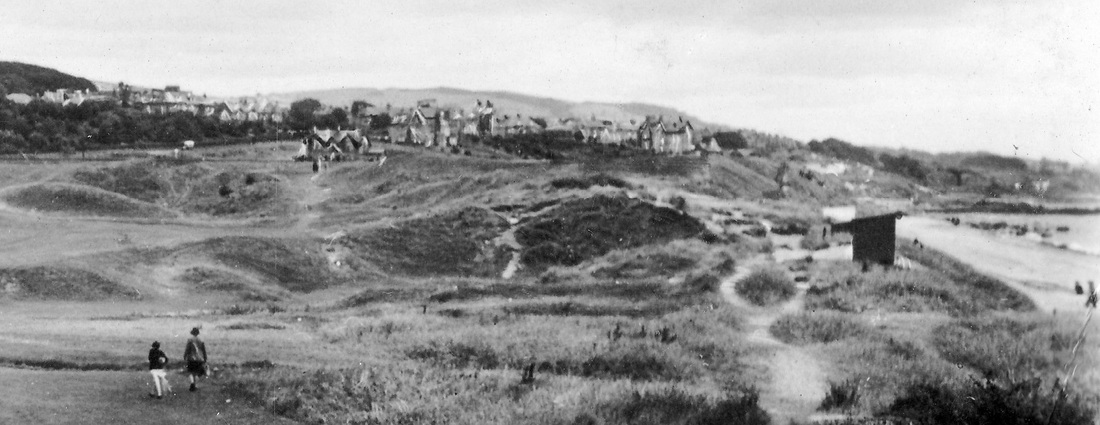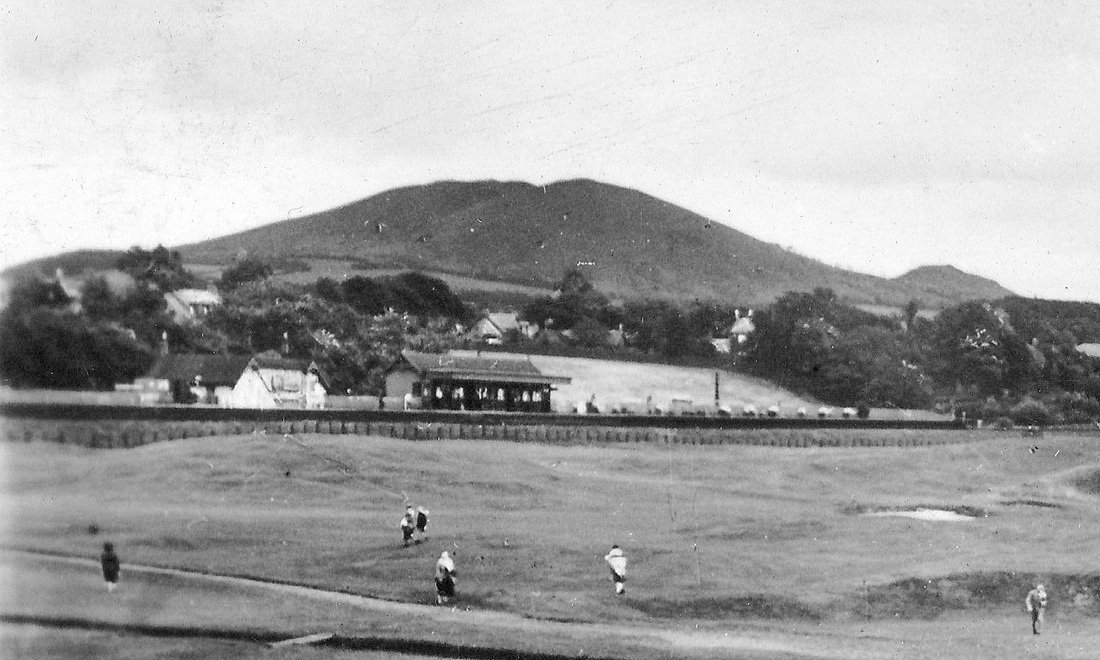|
A "links" is an area of rough, grassy ground between the sea and the land. The sandy soil of a links golf course drains well, providing a firm playing surface all year round. Links land is common on the east coast of Scotland and many sections of it became golf courses due to the poor agricultural value and the naturally undulating terrain. Such links areas are actually ancient raised beaches - land which was once at sea level but which now sits above the tide line, having risen up as the ice that once covering it melted away at the end of an ice age. Such a 'bounce back' movement is known as isostatic uplift. The links also provided a straightforward route for the railway line to pass over. This view shows the two main station buildings - the original light-coloured 1857 station on the left and the later darker-coloured station which superseded the original building around the turn of the century. Lundin Links station had a single platform and a small goods yard adjacent to the original station building. The people in the above photograph look more like they are heading towards the station than actually playing golf. I wonder how often the train passengers got in the way of flying golf balls!
0 Comments
Your comment will be posted after it is approved.
Leave a Reply. |
AboutThis blog is about the history of the villages of Lundin Links, Lower Largo and Upper Largo in Fife, Scotland. Comments and contributions from readers are very welcome!
SearchThere is no in-built search facility on this site. To search for content, go to Google and type your search words followed by "lundin weebly". Categories
All
Archives
July 2024
|


 RSS Feed
RSS Feed
